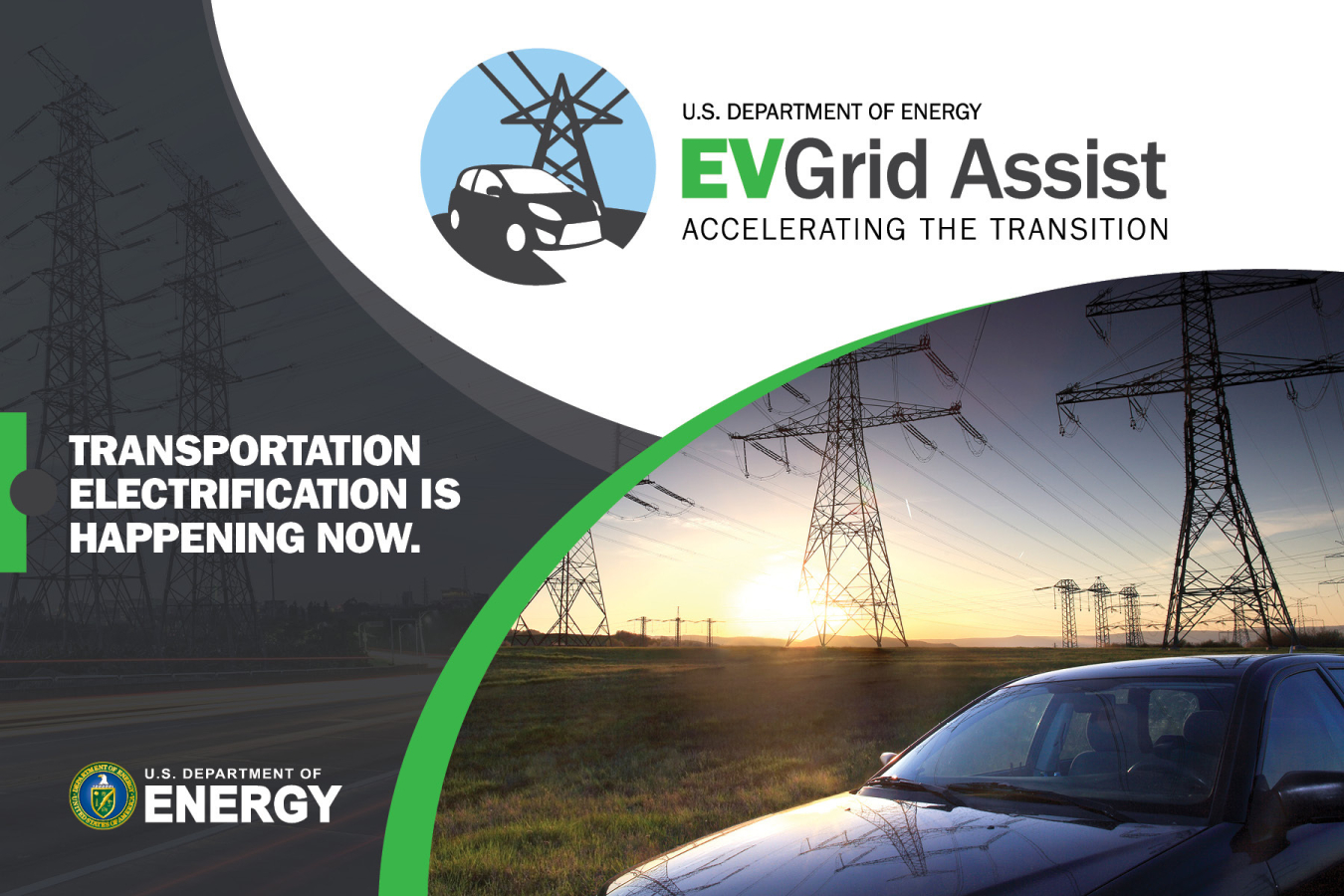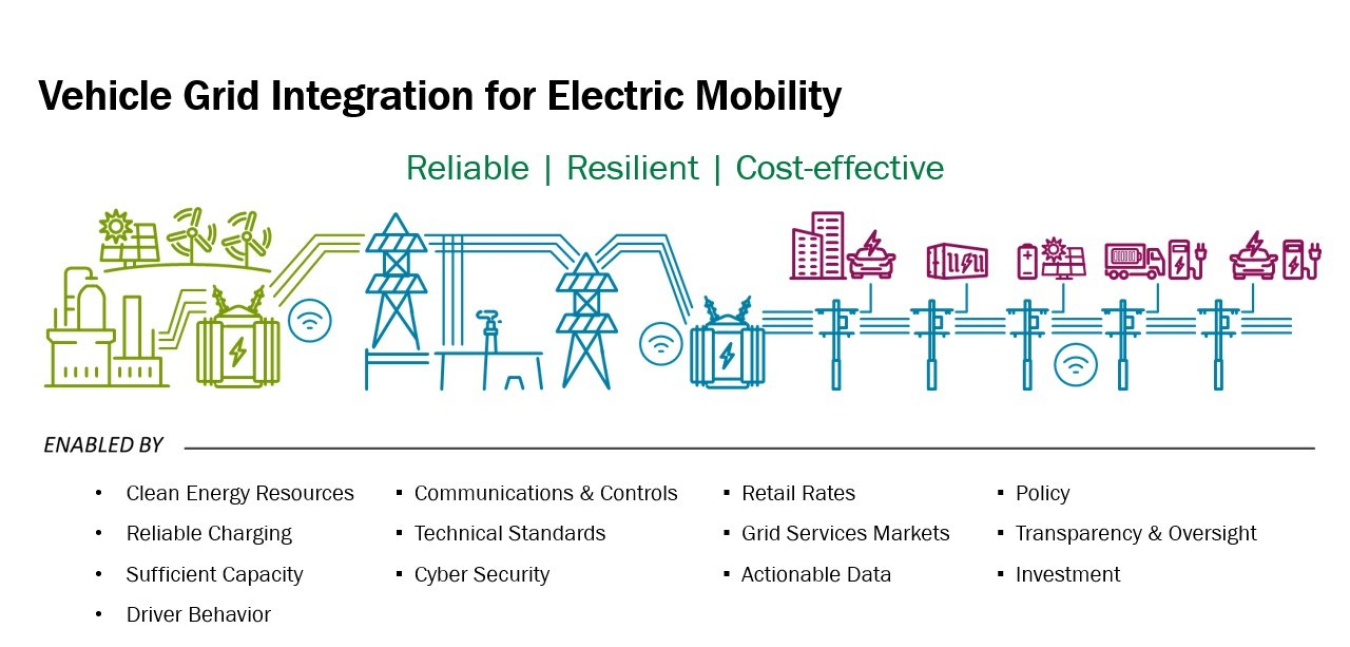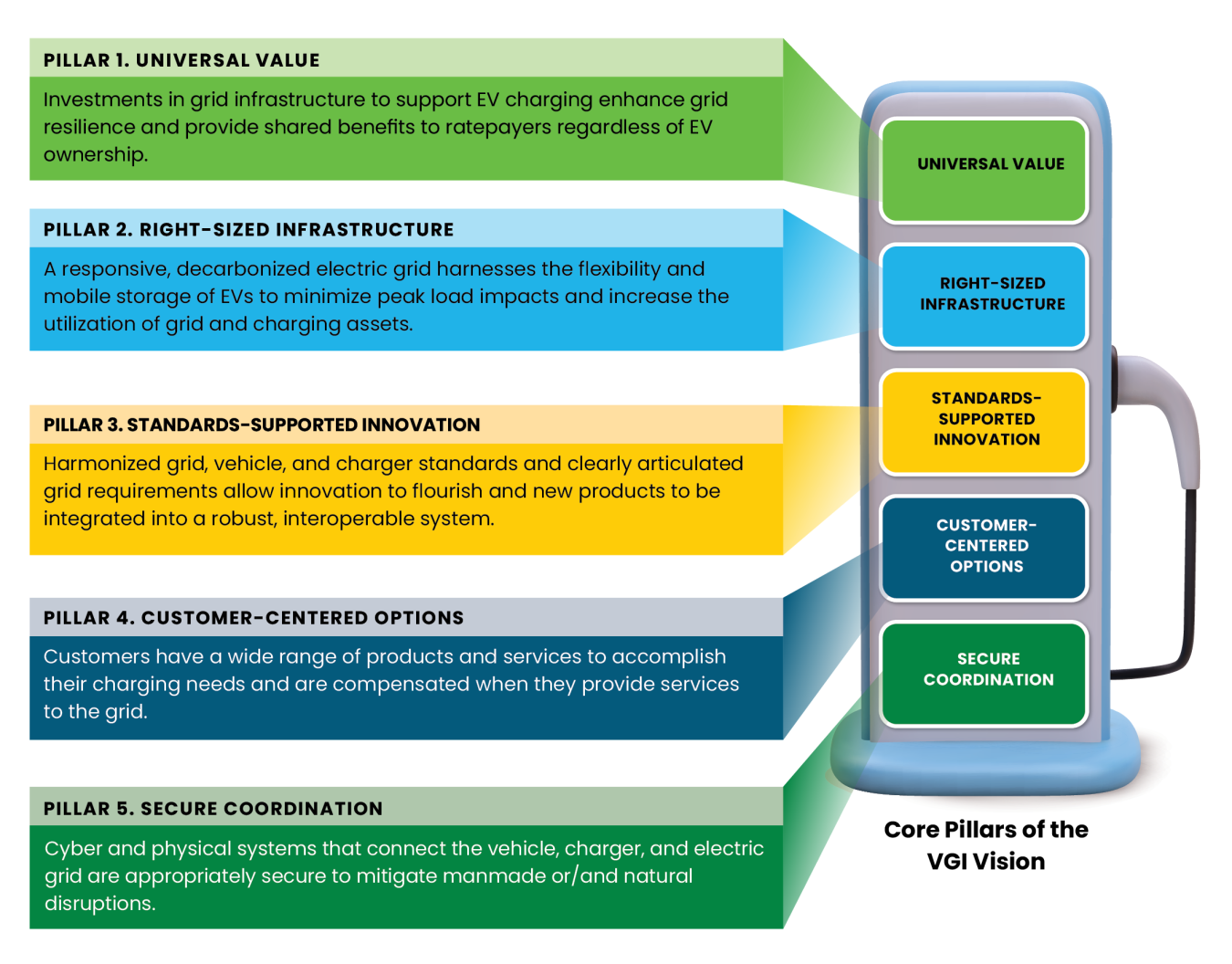Transportation electrification is happening now. Millions of electric vehicles are already hitting the road, with even more to come over the next decade. Successful integration with the electric grid will be essential for reducing emissions, maintaining reliable and resilient electricity, reducing system cost, and enabling a seamless charging experience. Switching to electricity as a vehicle fuel source offers exciting opportunities with numerous economic and environmental benefits, but it will also introduce complex, interdependent challenges that will require increased coordination among stakeholders. The U.S. Department of Energy, through EVGrid Assist: Enabling Vehicle Grid Integration, will support decision makers as they plan for the future of electrification.
EVGrid Assist helps stakeholders make actionable progress toward achieving their transportation electrification goals through validated data and tools, technical assistance and capacity building, and shared learnings from real-world experience. Efforts are coordinated with DOE's Supercharging the Grid Edge, where buildings, industry, transportation, renewables, storage, and the electric grid come together.
EVGrid Assist activities are designed to:
- Enhance learnings through informational webinars and peer-to-peer sharing, drawing from emerging research and real-world demonstrations and experience
- Provide pathways for stronger vehicle grid integration (VGI) coordination between electric utilities, regulators, manufacturers, technology providers, and other stakeholders
- Collaboratively identify solutions to emerging VGI challenges
- Develop resources and provide data, tools, and analyses that support decision making
- Build capacity and provide technical assistance to support stakeholders as they develop and implement solutions.
Through these activities, EVGrid Assist aims to enable and accelerate decision making to achieve our shared goals.

What Is Vehicle Grid Integration?
Vehicle grid integration (VGI) refers to the full suite of grid infrastructure, hardware, software controls, and the corresponding markets and regulations that enable widespread adoption of electric vehicles (EVs) by coupling the transportation and electricity sectors. VGI aligns the grid's physical infrastructure and operational structure, regulatory frameworks, and market design with customer charging behaviors to create a symbiotic relationship that provides value to the grid, customers, utility ratepayers, and society.
Why Vehicle Grid Integration Is Important
Beneficially integrating EVs with the grid is essential to ensure EV drivers have timely access to electricity to charge their vehicles while ensuring this new load becomes a positive asset to the grid—making the grid more affordable, resilient, and reliable. Successful VGI implementation can enhance electricity affordability and support grid reliability and resilience; enable timely, cost-effective access to electricity for EV charging; and support a positive customer charging experience.

Figure 1: Vehicle grid integration (VGI) spans the full suite of grid infrastructure, hardware, software controls, and the corresponding markets, regulations, and processes, aligning with customer charging behaviors to provide value to the grid, EV drivers, utility ratepayers, and society.
Vehicle Grid Integration Shared Vision and Strategy
The Future of Vehicle Grid Integration: Harnessing the Flexibility of EV Charging illustrates the characteristics of a future where vehicles are successfully integrated with the power grid. DOE developed this shared vision for the industry with input from utilities and regulators, manufacturers of vehicles and chargers, national associations, standards organizations, Tribes, fleet managers, consumer advocates, charging network operators, community-based organizations, and labor and environmental justice organizations. The VGI vision document is intended to serve as a guidepost for the transition—helping stakeholders prioritize and target action as they face competing priorities and balance trade-offs based on the needs of their local communities.
Building on this vision, DOE released a Strategy for Achieving a Beneficial Vehicle Grid Integration (VGI) Future, which describes the DOE activities that support stakeholders in implementing VGI solutions that benefit everyone, regardless of EV ownership. Through the following three mutually supporting strategies, DOE aims to increase certainty in VGI technologies to catalyze investment in and widespread adoption of VGI approaches:
- Validating repeatable, extensible VGI solutions
- Supporting VGI institutional decision-making
- Spurring VGI innovation

Priority Activities for EVGrid Assist and Stakeholder Engagement Opportunities
To accelerate progress, DOE plans to provide several opportunities for stakeholder engagement. Priority areas include:
- Reducing energization timelines.
- Benchmarking and reducing EV charging soft costs.
- Developing common approaches for EV load forecasting.
- Identifying cost-benefit analysis approaches for managed charging.
- Establishing frameworks for data access, sharing, and privacy.
- Optimizing charging through managed charging solutions.
DOE is convening stakeholders through the VGI COLLAB Forums to share best practices and lessons learned and collaboratively design solutions. Sign up on the VGI COLLAB Forums page to receive updates on upcoming COLLAB events about the topics you’re interested in.
Resource Library
Numerous resources exist that can assist stakeholders as they plan for charging infrastructure rollout and integration with the electric grid.
Visit the EVGrid Assist resource library to access the reports, documents, and tools available to help with planning for EV adoption and vehicle grid integration.
Contact
We are interested in hearing from you! If you have recommendations about specific areas the initiative should explore, helpful resources, success stories, lessons learned, or challenges you are struggling with, please email [email protected].
EVGrid Assist is a cross-DOE effort that is led by the Office of Electricity's Advanced Grid Modeling Research Program, the Office of Energy Efficiency and Renewable Energy's Vehicle Technologies Office, and the DOE/DOT Joint Office of Energy and Transportation.
Receive the latest VGI news, reports, and upcoming webinars.


